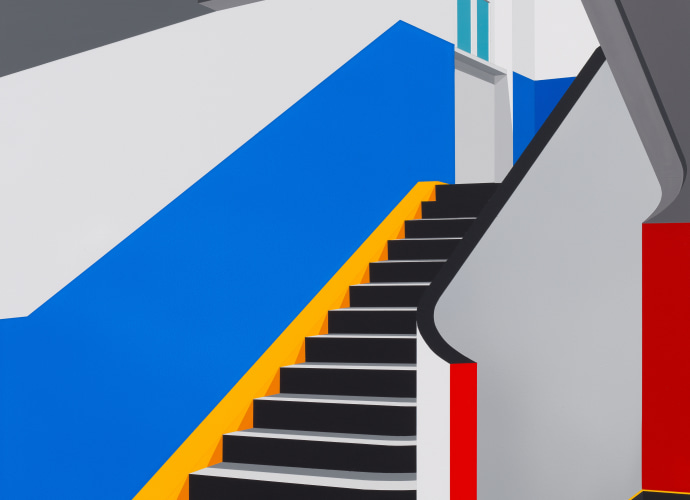
DANIEL RICH | INTERIOR DESIGN
10 Questions With… Painter Daniel Rich
10 APRIL 2024
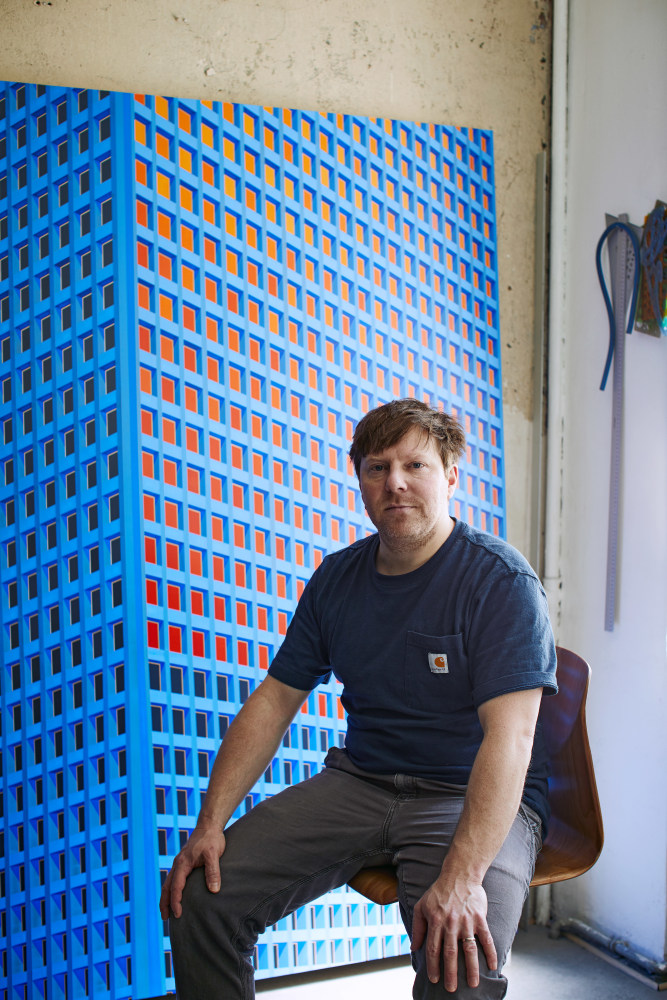
ID: Could you talk about your process of working with different resources?
DR: I either come across an image by happenstance or through specific research, often in response to investigative journalism. Sometimes, it’s through literature or films, and other times through travel and direct experience. It is hard to pinpoint what makes an image “work” for me and what doesn’t; I can only describe my process as intuitive. Choosing an image can be the hardest part of my practice—when I have an idea or a subject in mind for a painting, but can’t find the right image, for example.
ID: What are the differences—if there are any—between working with an image you took yourself as opposed to an online-sourced image or one from general media? Previously, you worked with Google Street View as well.
DR: I mostly work with appropriated imagery but doing so comes with its own set of challenges and implications. Working from my own photographs can have an impact on content, but it offers opportunities for travel and research. Working with Google Street View screenshots was a central conceptual element of my last exhibition at Miles McEnery Gallery and a new line of investigation for me.
— Osman Can Yerebakan
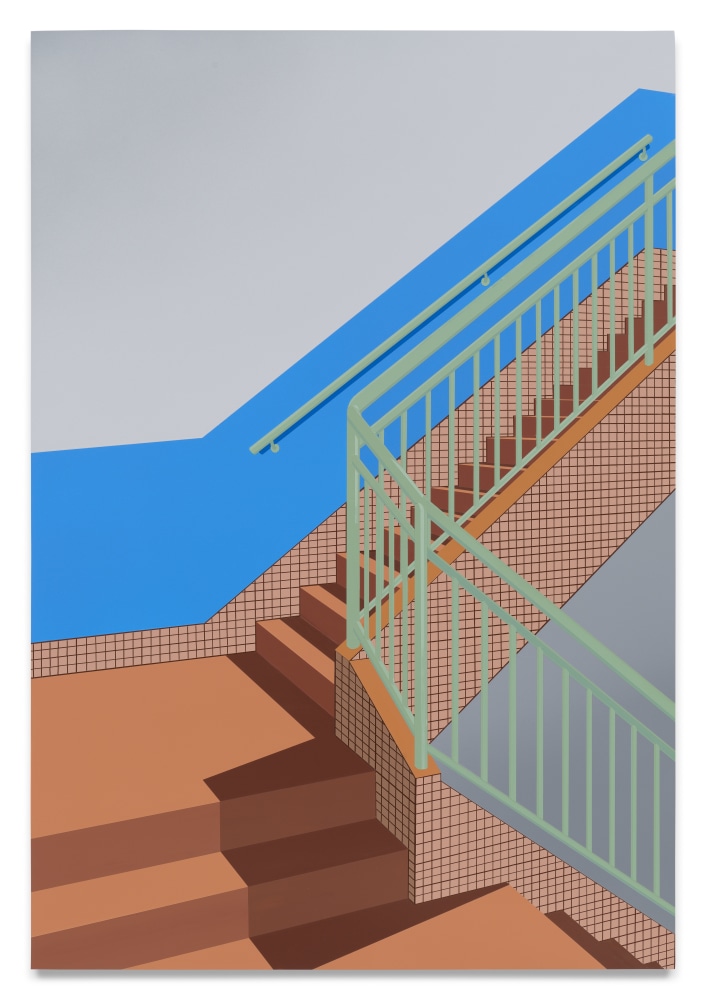
Hong Kong University, 2023, Acrylic on Dibond, 38 x 26 inches
DANIEL RICH ON WHAT HE SEES BENEATH THE VISIBLE ARCHITECTURAL FORMS
Interior Design: There is a strong nod to geometric abstraction in your interiors, particularly former building facades. How do you balance representation and abstraction while still conveying an architectural familiarity?
Daniel Rich: I think there are times in every painter’s work, myself included, that you feel inclined to make a nod to histories of painting. My work has, for some time, been focused on the role architecture plays in politics and its power to function as an icon of our lived experience. The references to geometric abstraction in recent works have been a way for me to bring in more discussion about the politics of art and aesthetics. In terms of balancing representation with abstraction, I work from photographs and that is an important part of my art. They allows me to hold onto qualities of an image that are representational and also find spaces for playing with abstraction and color.
ID: Abstraction yields hallucinatory effects in some of the paintings. How do you approach patterns and design cues to transfer this feeling in painting?
DR: My last body of work prior to the current exhibition at Miles McEnery Gallery investigated the blurring of truth and reality in media and in politics, “Fake News”, political propaganda, the rise of artificial intelligence, and a sense of disorientation and anxiety. I used color and pattern to emphasize these notions of uncertainty and to inject a surrealist quality into that work. But, recently, I’ve been looking at a lot of geometric abstraction in the works of Beverly Fishman, Al Held, Carmen Herrera, Mondrian and Bridget Riley. I’m also thinking about the way you feel when you look at a Mondrian versus a Bridget Riley painting.
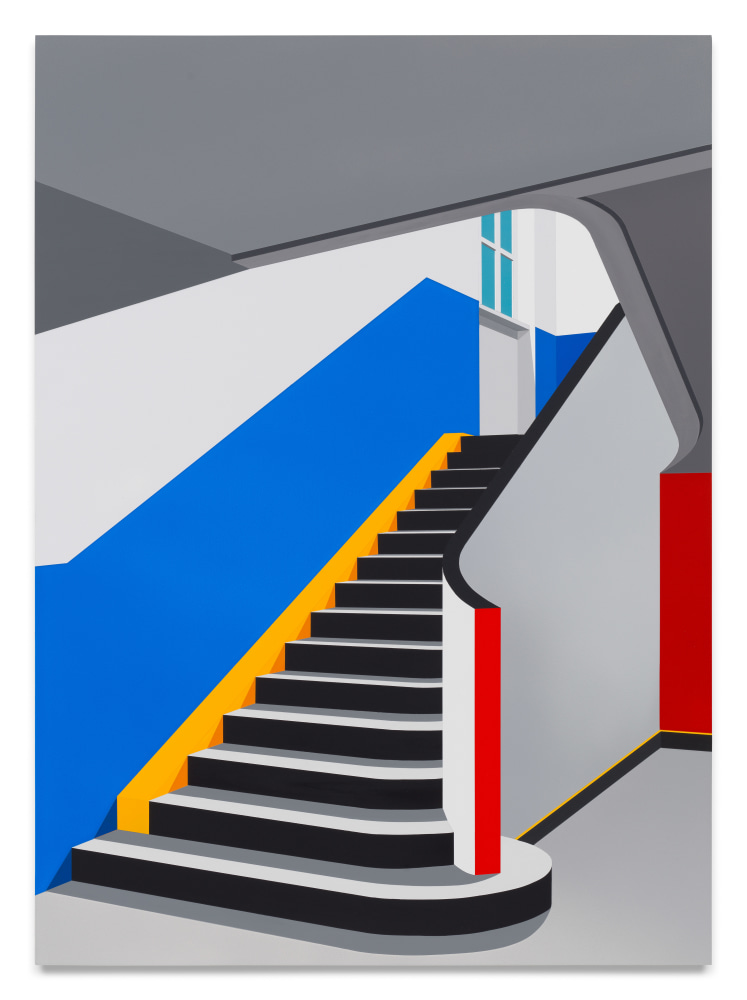
Hindenburg Haus, 2023, Acrylic on Dibond, 33 x 24 inches
ID: What is your relationship to architecture? Are you an observer and chronicler of structures and patterns?
DR: I am, though maybe in a more low key way than you might imagine. Many of my travels are indirectly motivated by experiencing the built environment. My interest in the symbolism of architecture stems from having grown up in a divided Germany in the 1980’s and ’90s, the underlying tension of the Cold War, experiencing the fall of the Berlin Wall (on television), and experiencing traces of Germany’s dark 20th century history. These experiences all caused me to develop an interest in how implicit political and social narratives are transcribed in the built environment. September 11, which coincided with the start of graduate school, was another inflection point in my development as an artist. I also have a background in skateboarding and graffiti—both of which have been important influences in how I observe and interact with architecture and the built environment.
ID: What prompted you to depart from exteriors and go “inside” in this exhibition?
DR: My last exhibition at Miles McEnery Gallery, Flat Earth, focused on heavily abstracted and colorfully loud and opaque New York City facades as seen from a “street view” perspective. These street views made the viewer of the paintings a participant of sorts. The paintings were scaled to an iPhone screen and referenced amateur snapshots taken by an imagined demonstrator, protestor or by someone participating in a victory march through Manhattan. For this exhibition, I knew I wanted to do something different from my previous show and focus on quiet and intimately scaled paintings that offered a moment for reflection and introspection. I knew the staircase would be a central theme alongside portals—and the idea of public vs private.
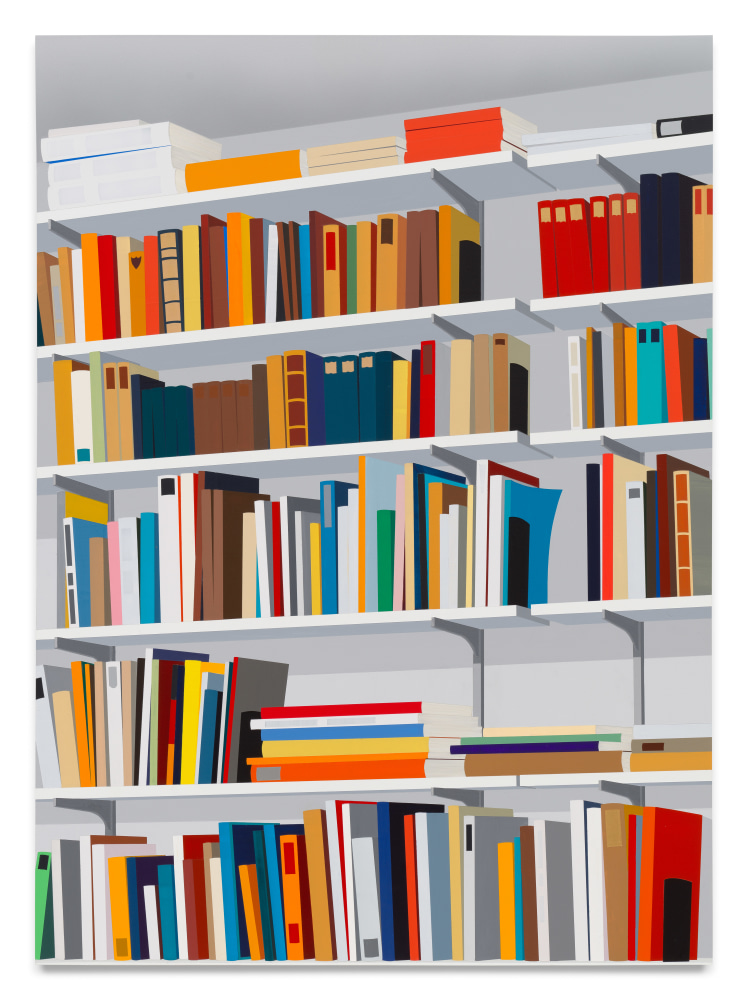
Gropius House, Lincoln, MA, 2023, Acrylic on Dibond, 33 x 24 inches
ID: How does living in the U.S. and Germany inspire you, given their different aesthetics and architectural and design characteristics?
DR: My family history has been shaped by immigration. On my father’s side, I am a fourth-generation immigrant. I was born and raised in Germany, but I have a British passport and my parents are British though I have never lived in the U.K.. I’ve lived in the U.S. for half my life, but I’m not American. I identified with being European, but the U.K. left the European Union. All of which is to say, there is a sense of alienation and loneliness in my work. I think my lack of a national identity and feeling like an outsider is an important part of how I experience cultural and aesthetic choices that are part of the two different countries’ built environment. That being said, my story isn’t a sad one; I’ve been very lucky.
ID: Could you talk about your approach to colors? Your colors align and provide a sense of flatness and depth.
DR: Color, technique, process, detail, and surface are important tools for me to attract and draw the viewer in. I use color strategically to play with perception, visual depth and flatness. I apply my paint with a squeegee which results in a paint film devoid of brushstrokes. Masking and stenciling gives this paint film a graphic physicality, and upon close inspection my paintings reveal themselves to be made up of hundreds, sometimes thousands of individual shapes, each painted with a designated color. I enjoy the moments when the image “falls apart” because of its abstract qualities, and then reconfigures itself when viewed from a distance.
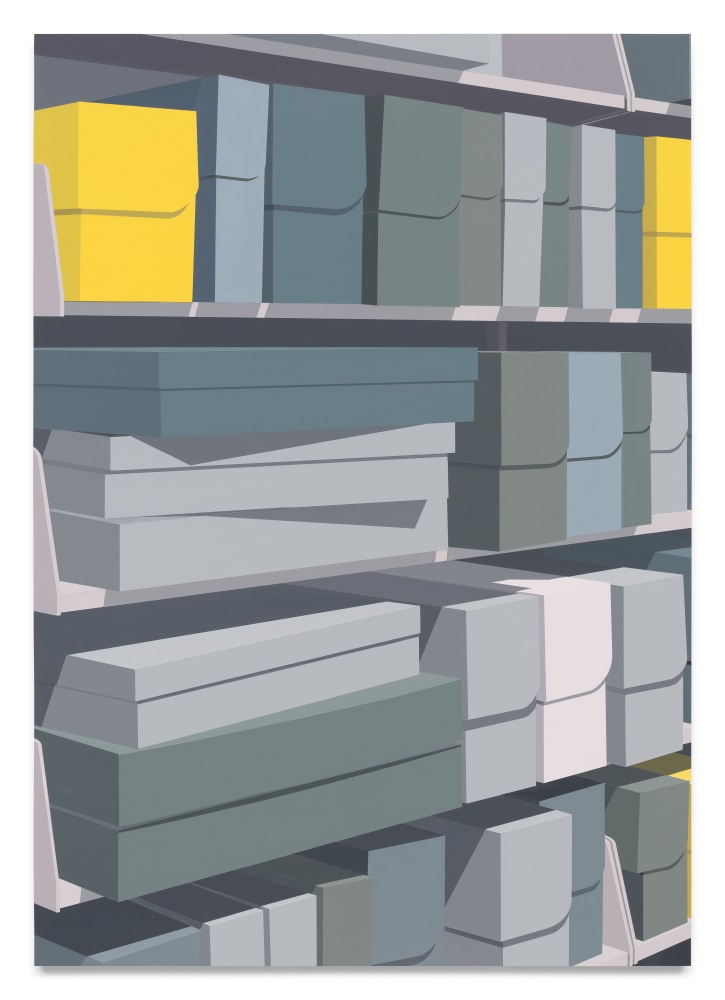
Archive (For Hannah Arendt), 2023, Acrylic on Dibond, 34 x 24 inches
ID: Architecture is a political body, imbued with traits of ideology. From Manhattan skyscrapers’ representation of American capitalism to Europe’s colonialist ornamentation, power and architecture run parallel. How do you build interiors that acknowledge this reality while seeming free from a specific political standpoint?
DR: I do not take an overt political position in my work. However, I do consider my work to be political and I have strong political opinions and viewpoints. Lately, I want my artwork to be subtle and powerful at the same time, though that hasn’t always been true. I allow the viewer to come to their own conclusions about the paintings, and want them to serve more as a prompt for contemplation rather than specifically what to think. For this show of interiors—and most of my work in general, the titles and the presentation of the paintings as a body of work is important to get an understanding on the content. Each image is specifically chosen for its ability to be a signifier for subject matter—some more overtly than others.
ID: A few paintings are titled after the date you encountered them, and others are titled after the buildings’ architects. How do paintings chronicle place and time?
DR: I’m interested in the potential divergence and duality of images. For example, a work from 2018 titled Aleppo, March 15th, 2011, which was not in this show, depicts the rooftops of a neighborhood in Aleppo, Syria, covered with satellite dishes. The title of the piece referred to the day before the 2011 civil war officially started—before the destruction of the city.